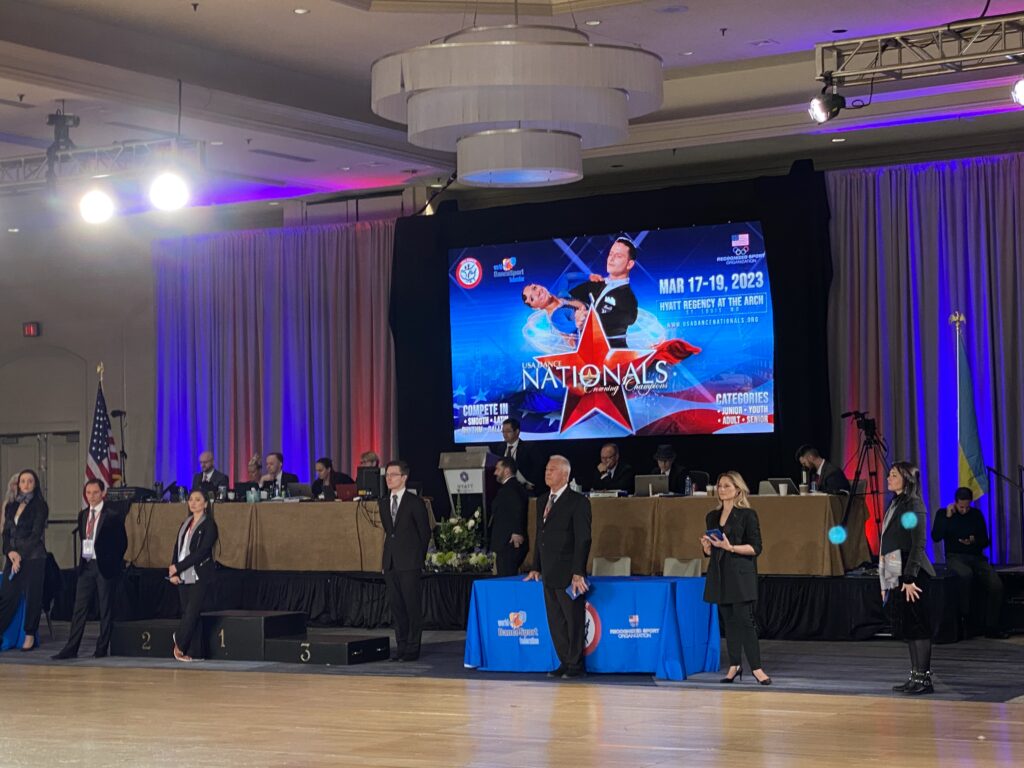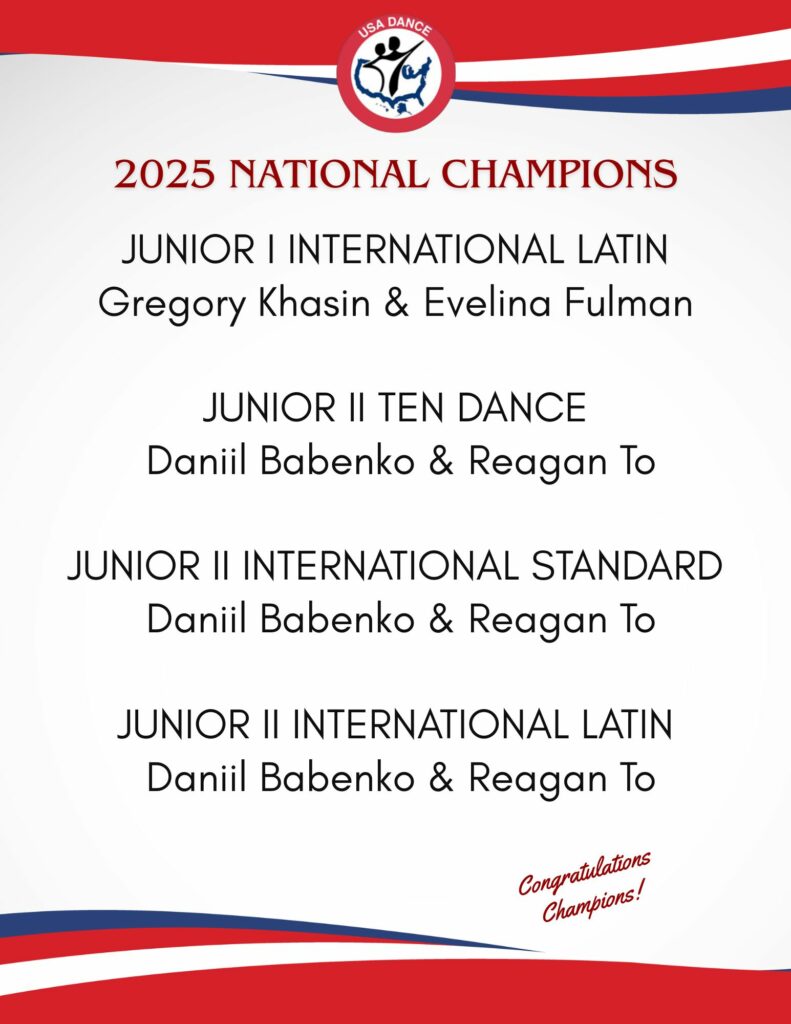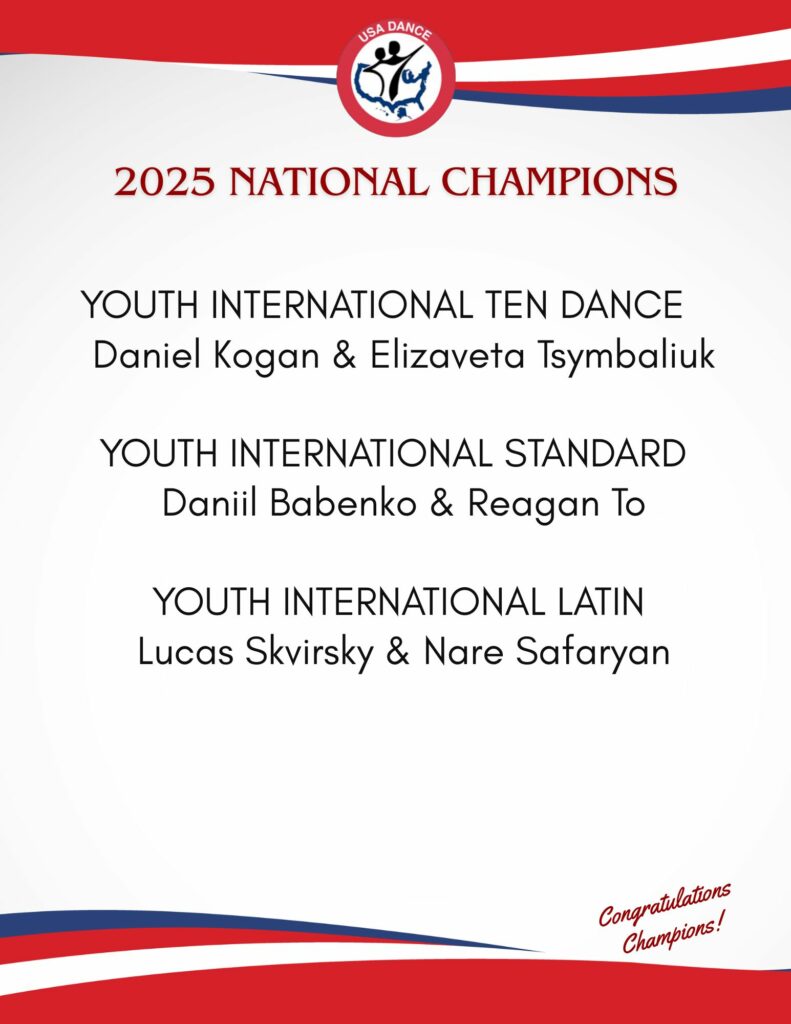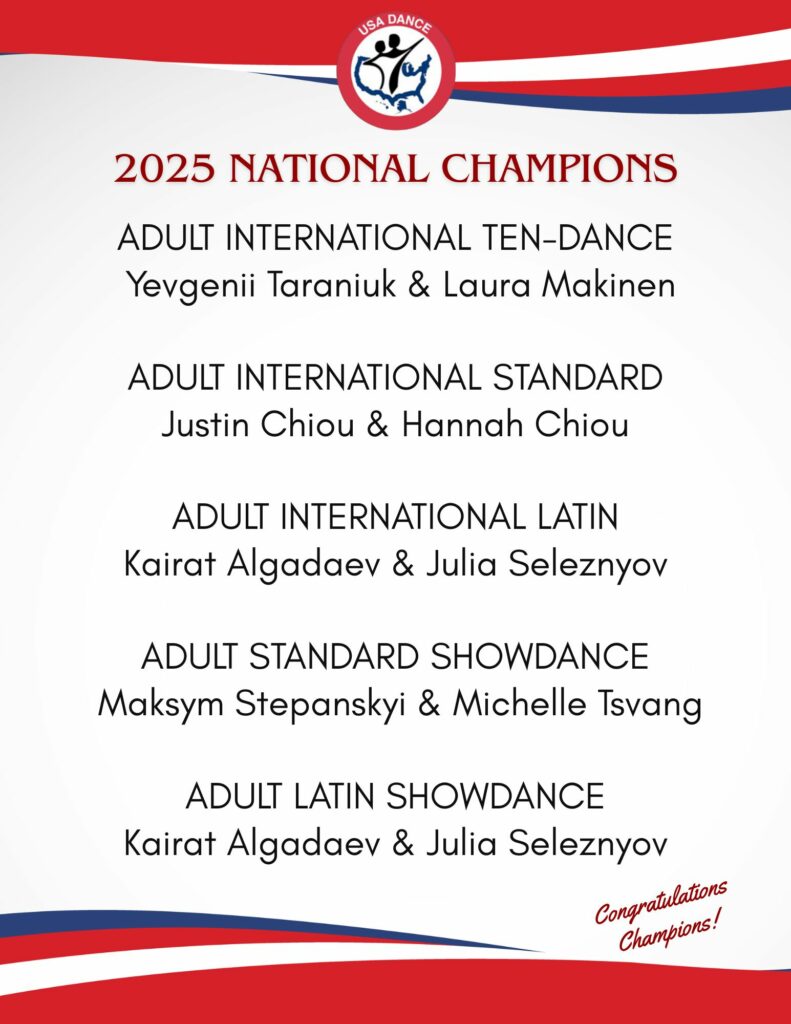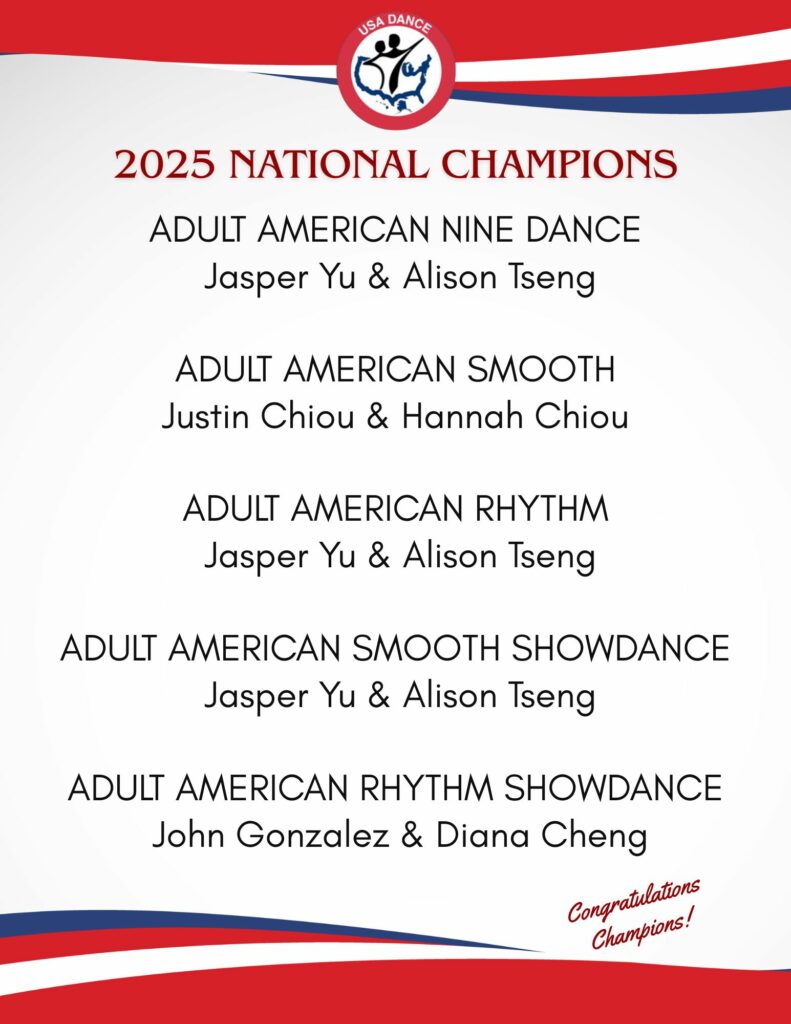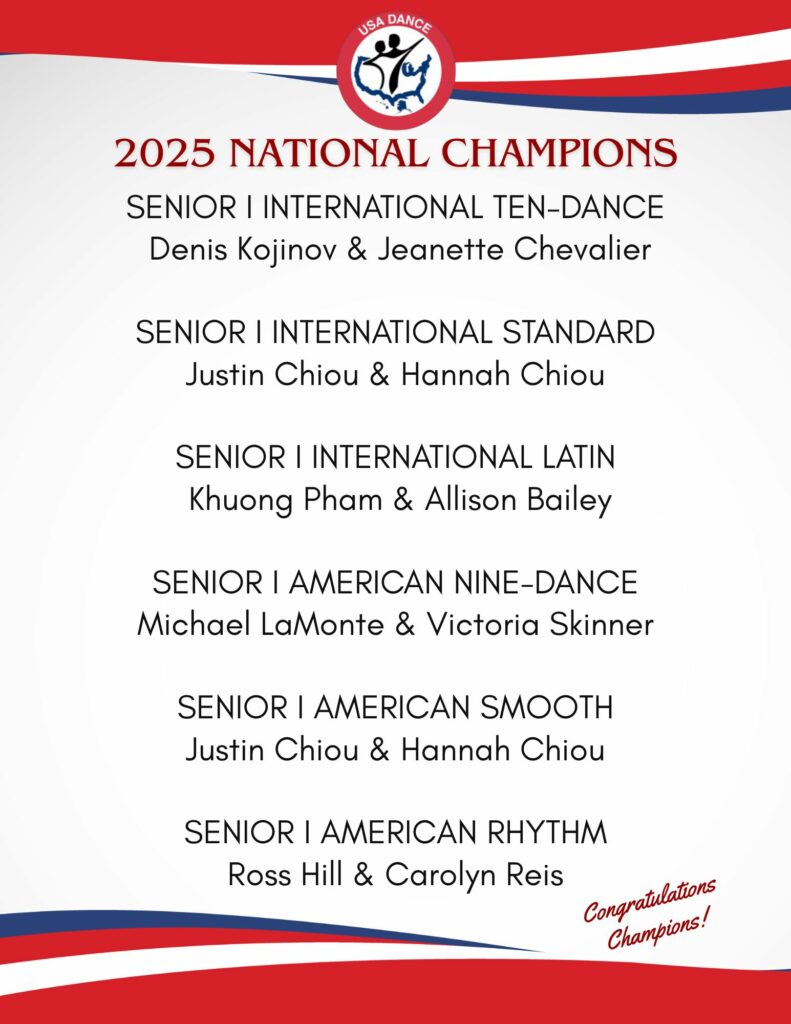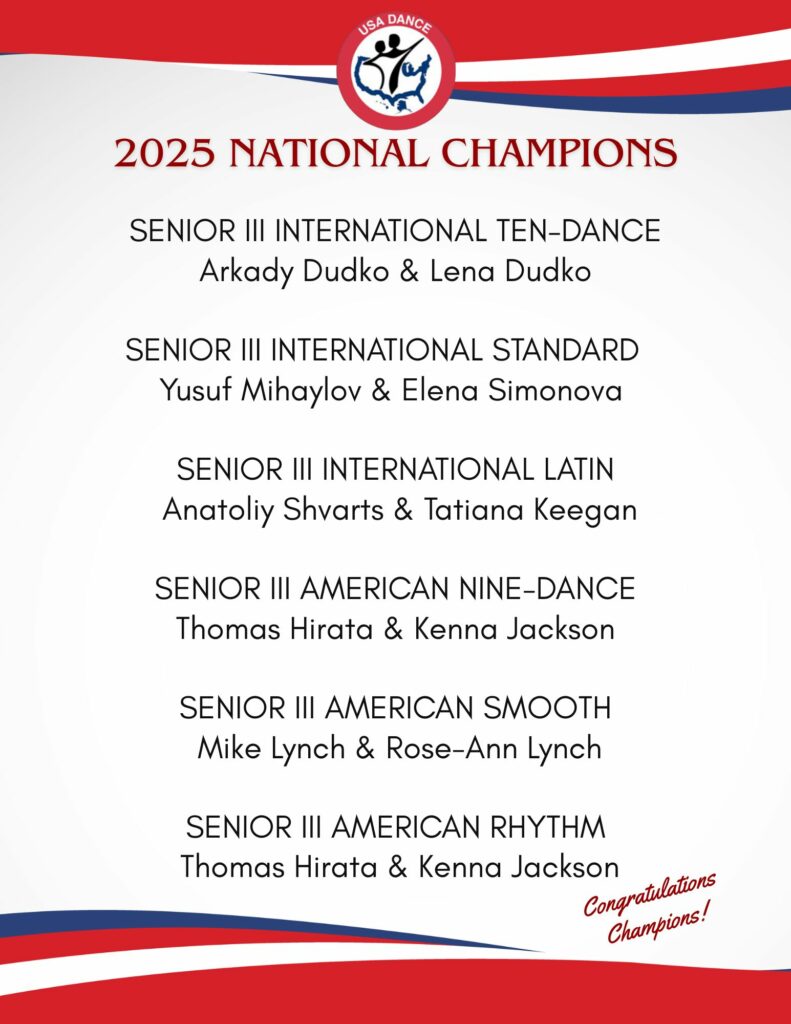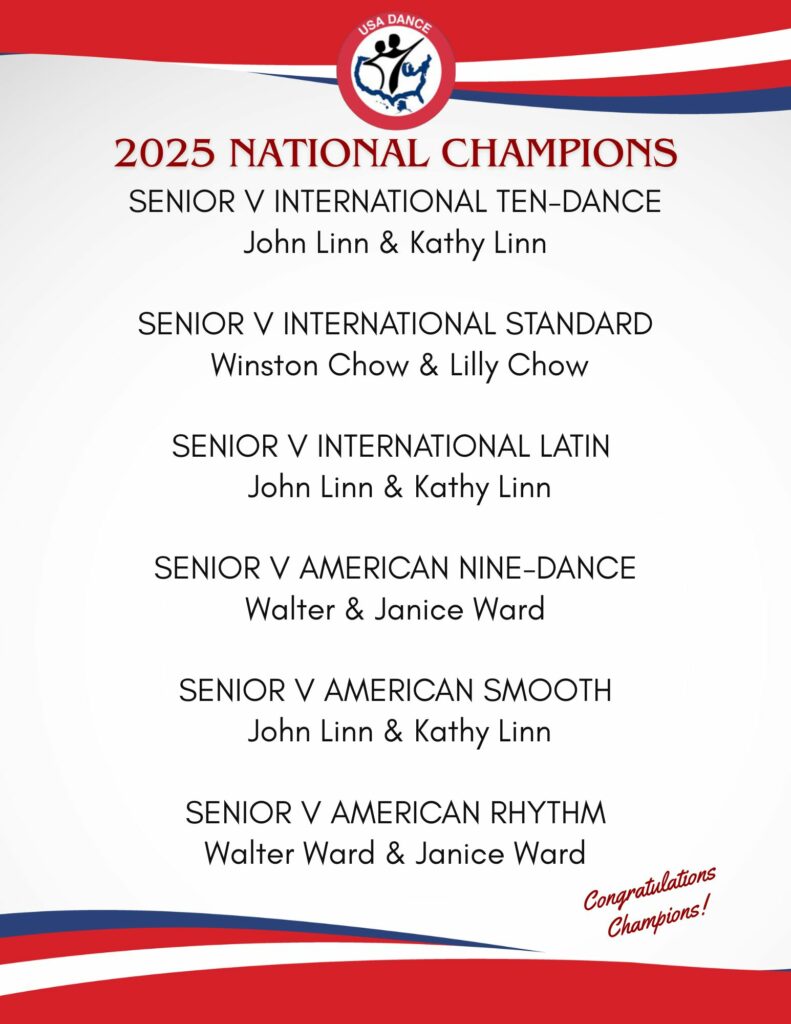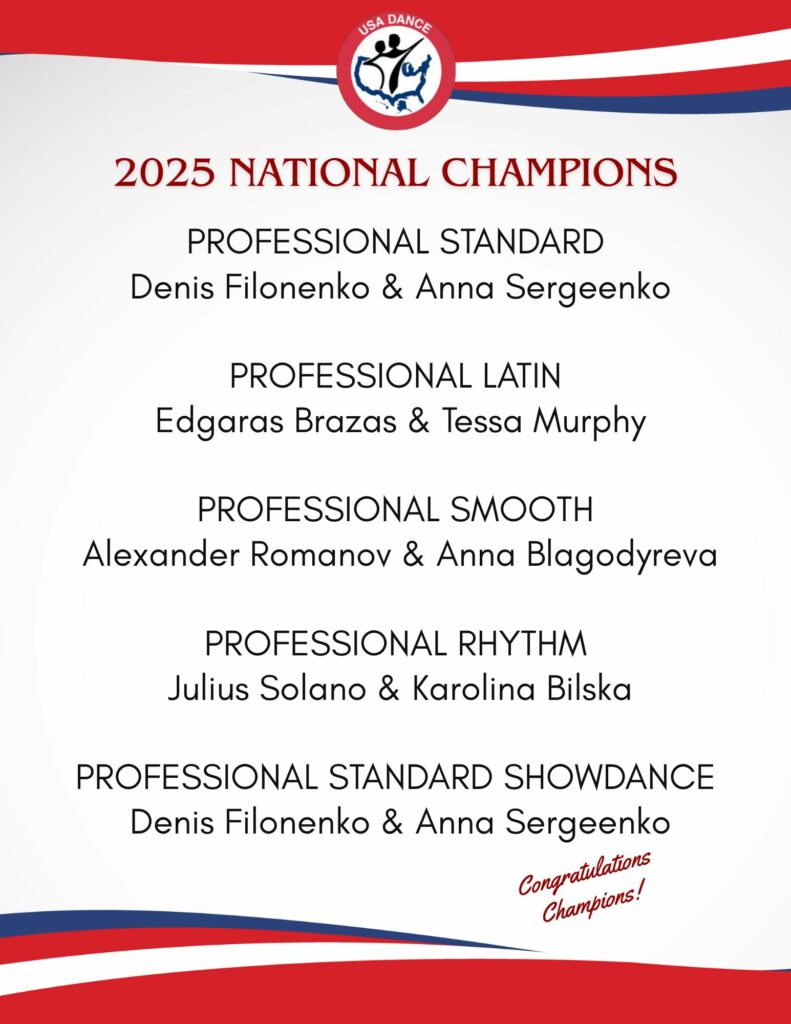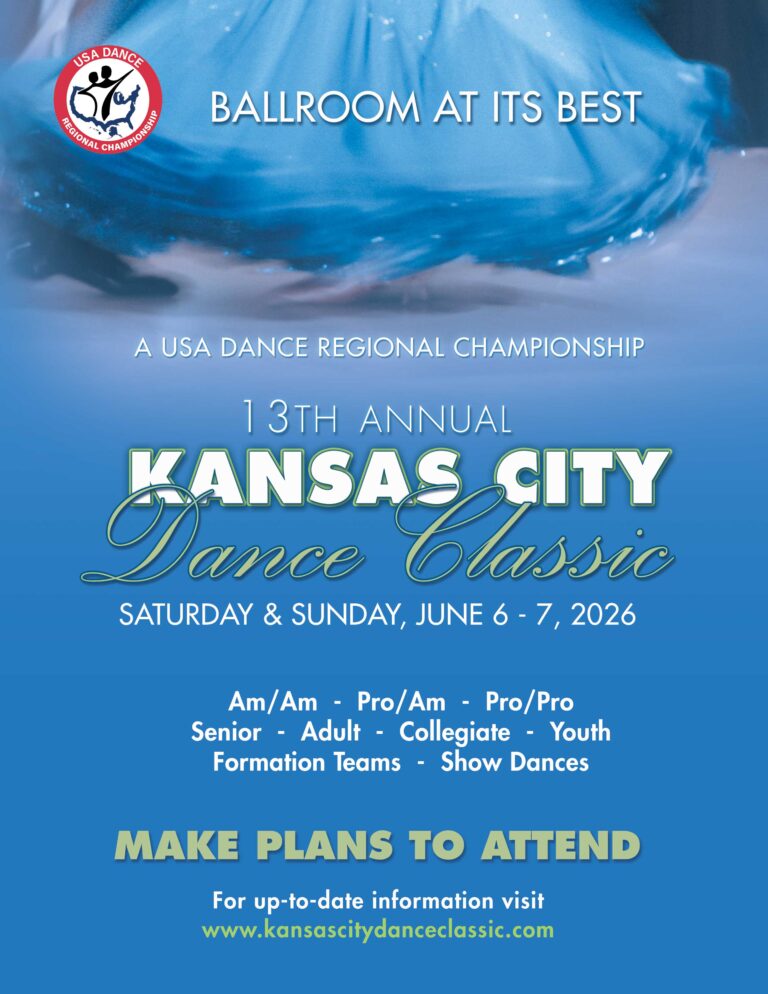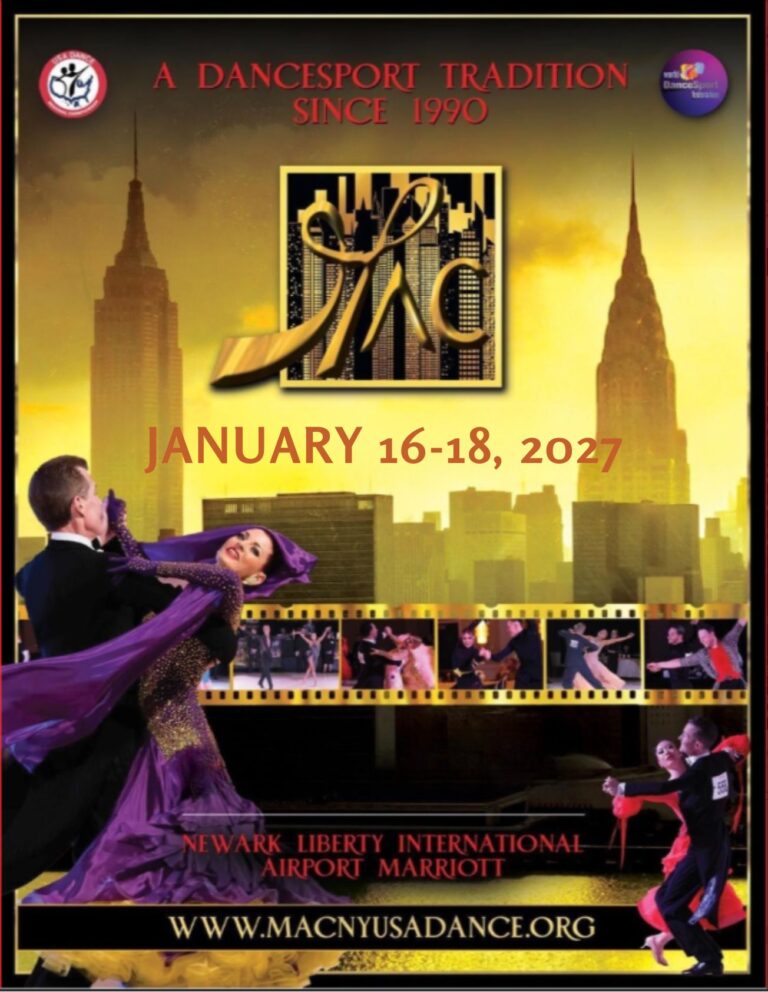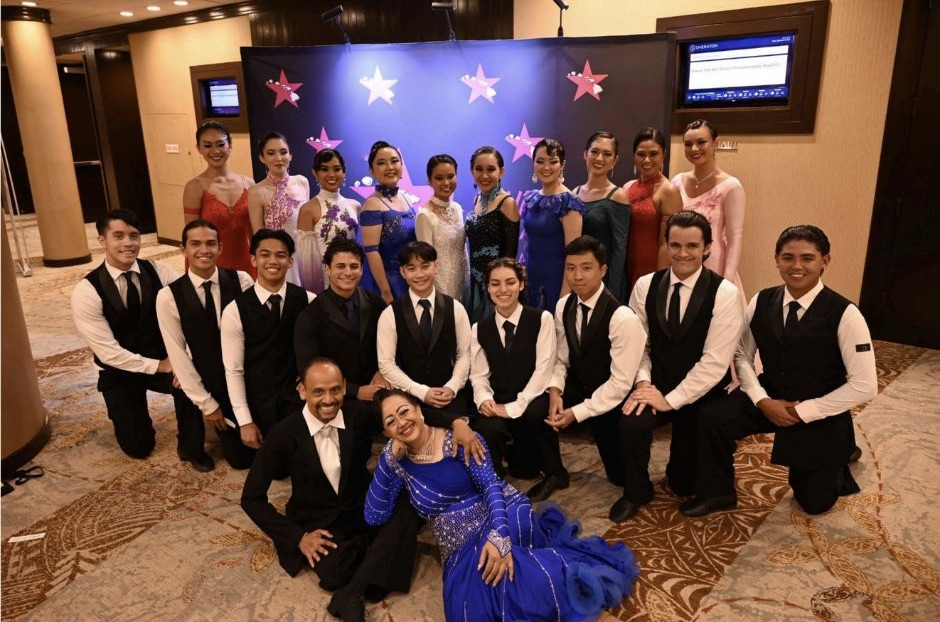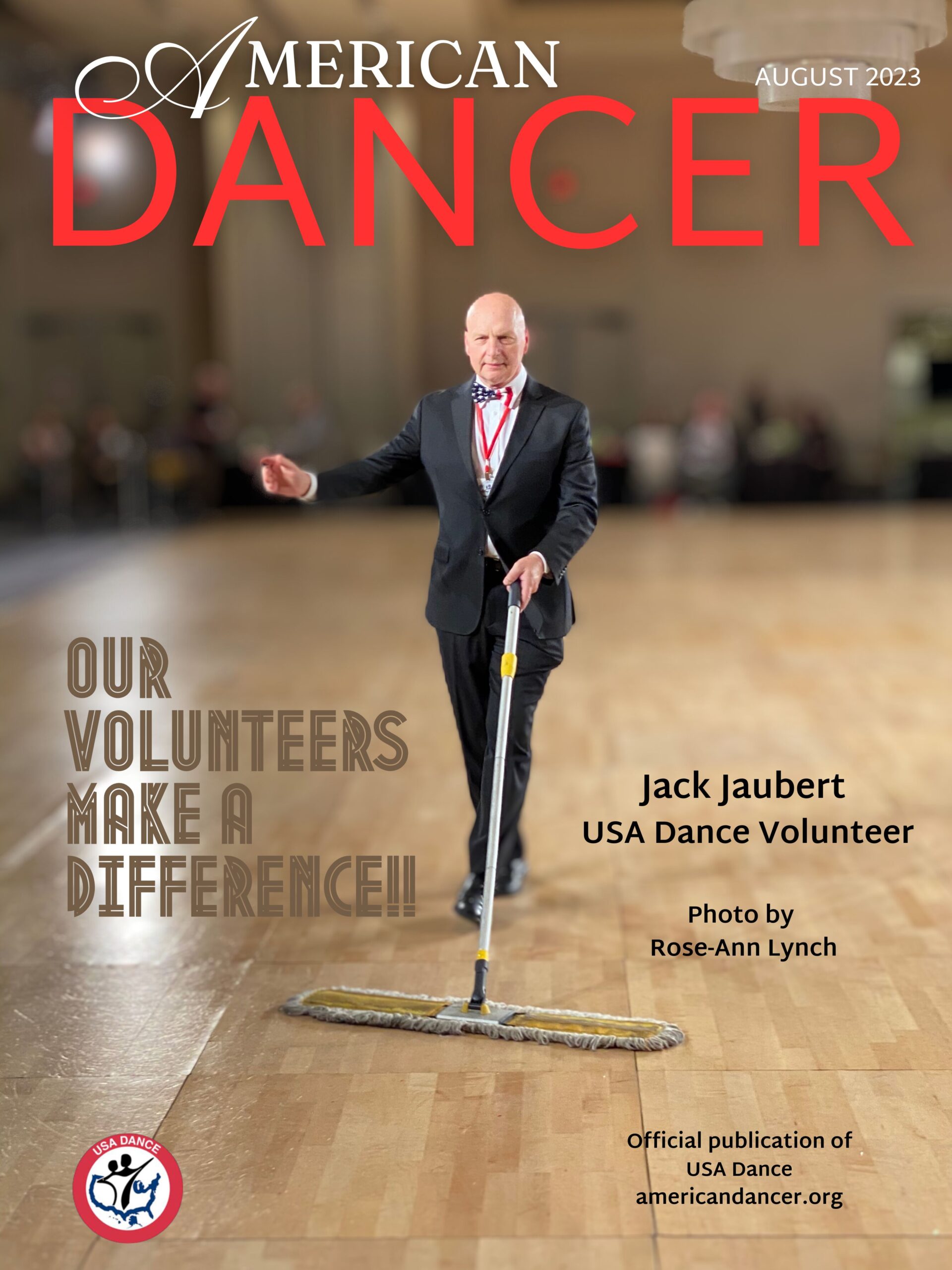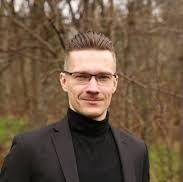You just danced your best. You are sure of it. If this had been Nationals, you and your partner would surely be wearing the Gold Medal and standing on the highest podium as National Champions! Then it comes…4thPlace! 4th Place? We must have heard it wrong. How can that be? What are those judges looking for? Did you smile? They didn’t like your dress. I told you to get a new tailsuit. They don’t like us. How could it be 4thplace? What do those judges know?
Some of those questions can be answered: What do those judges know and what are they looking for?
American Dancer caught up with the USA Dance Chair of Education & Licensing Committee, Viktoriya Drubetskaya, to find out how one becomes a judge, to learn what they really know, and to explain a little about what they are looking for. If you are a DanceSport Athlete, you will find this Q&A session quite educational and maybe decide to set your sights on being a future judge. If you are a social dancer, it might remind you of the many facets of our great sport and pastime. If you are a judge, it might remind you to keep up with your certifications and to know that the Athletes are painstakingly going through each and every mark you make.
Note: For the purposes of ballroom dancing and this piece, the terms “judge” and “adjudicator” are interchangeable.

Who can become a USA Dance Judge or Adjudicator?
In the case of USA Dance, a judge candidate must be a USA Dance member and must have passed at least two levels of certification.
We consider a candidate’s dance accomplishments, teaching experience, Amateurs with results, and certifications. Ideally, the candidate has danced competitively and has experience with a competitive background. If they never competed, it would be tough to become a judge; there would have to be some additional accomplishments to consider.
If they have not already done so, they must declare themselves Professionals. We have not yet seen an Amateur go directly to Judge. More likely, they will teach or compete as Professionals for a few years.
What are the judging levels?
The different judging levels are:
- Certification level
- Championship level
- National level
What teaching certificates must a candidate have to be a Judge?
The teacher society can award certificates at three levels:
- Associate Certification
- Master Certification
- Grand Master/Fellow Certification
A candidate may apply to judge if they have taken their Associate Exams. But they may only judge events for which they are certified. So, if they are only certified with their Associate Certificates in a certain style, they can only judge Bronze events in that particular style.
If a candidate wants to be a fully credentialed judge, they need to go through their Associate and Master certifications.
We are also looking to create a judging exam and mentoring system, so new judges have an idea of what it feels like to judge. This will allow them to better understand judging priorities.
Approximately how long does it take to be a fully credentialed judge?
This is not a quick process for anyone. There are five books for each dance, each with 40 pages of theory, figures, and figure parameters.
Timewise, 2-3 months for Bronze, then 2-3 months for the next. It takes time. Some people longer, some people less. But usually a year. It takes approximately three years of hard work to be a fully credentialed judge. It all depends on what style and level the candidate is in and wants to certify in.
What does the testing consist of?
Candidates must know the syllabus and figures and must be able to dance them. A demonstration must coincide with what is said. It should be ingrained. If they say “toe, heel” and are not doing that while discussing “sway”, it shows that the knowledge is not ingrained.
Different people test well in different parts. Some are good at theory. They think logically and it makes sense, but then when they dance, they do not have the fluidity or the ability to put the figures together. Others know the information but deliver it very slowly – it doesn’t come out easily, it is cumbersome, or the language is difficult.
As someone who administers tests, I score dancing theory and demonstration separately.
The Dance Vision takes the lowest of the scores. If a candidate scores theory with high honors, but is only commendable in demonstration, they would only receive a commendable score.
A candidate only has two hours to take the whole thing, which includes theory and demonstration. The Associates takes two hours and Silver or Masters requires 2.5 hours. It’s hard for even the best dancers to put what they do in movement on paper.
It is a very lengthy process.
Once someone has USA Dance Judging credentials, what do they need to judge World DanceSport Federation (WDSF) events?
Becoming a WDSF Judge is harder and takes more time. The exam requires a good year of study for someone already knowledgeable. There is a written test for theory and figure descriptions, plus a new format in which a candidate must recite their knowledge, instead of a multiple-choice exam. Plus, WDSF requires their candidates to have danced in the WDSF system.
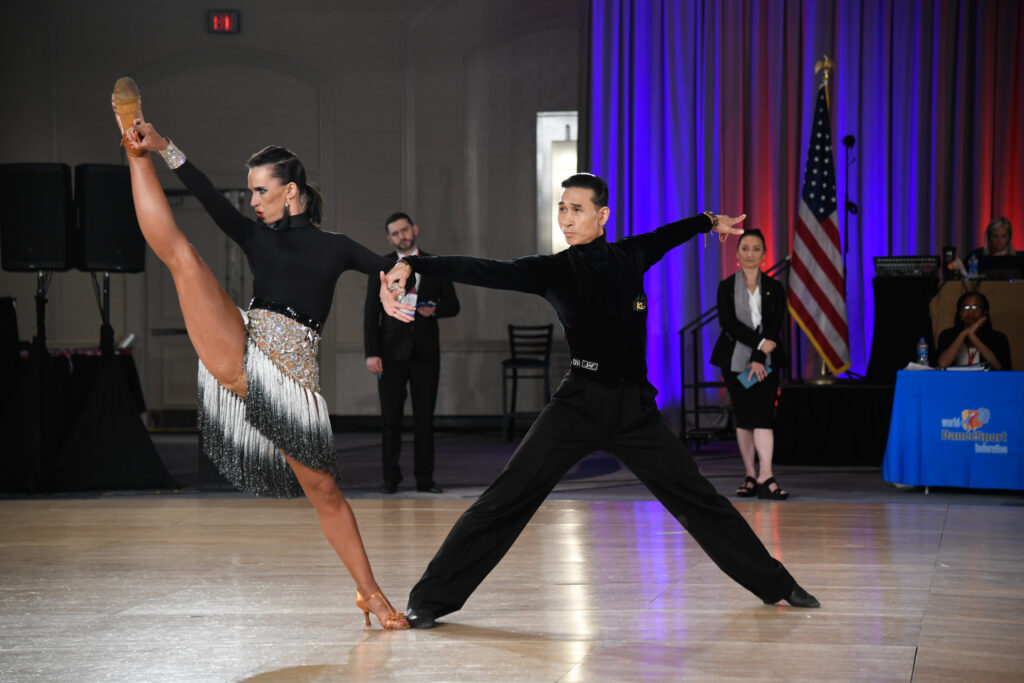
How are judges assigned at a competition?
If we are at a Regional, like Kansas City, the judges might not all have the same certification levels and may be limited in what they judge. We prefer that judges have all their certifications, because, whoever hires them knows each judge can be used anywhere or at any time in the competition. Our job is to vet if they are available to judge, but ultimately the competition’s Chairman of the Judges must continue vetting and know what each judge can adjudicate.
Are most USA Dance judges fully credentialed?
We have some that are grandfathered. That is to say that we have a few judges from long ago when they were not required to pass all the disciplines; they can still judge. Today, judges must be fully certified in all the events they are judging.
What is the process to apply to be a judge for USA Dance?
If a candidate with all their credentials wants to be a judge, it starts with a resume and an application. The candidate’s application goes through the USA Dance Professional Committee. We look at the resume and the certifications, and then a panel of four Professionals decides. Sometimes more information is needed, and the Professional Panel may ask to speak to the candidate’s examiner. Dance Vision facilitates this by providing a cover letter with a general review of the candidate’s dance-theory portion of their test, along with their score. The panel is in search of well-rounded judges. If, for example, the candidate has only competed in Smooth, the panel may dig deeper to ensure that their knowledge of the other styles is complete.
We have had candidates who danced long ago and have been teachers for a long time. We approach that differently, as opposed to someone straight out of a great Amateur dancing career. We consider they have experience in dance, know the business, and are now certified. An ideal candidate goes from Amateur to Professional, teaches for a while, and then certifies.
There is a discussion by the panel followed by a vote, accepting the credentials and resume, and deciding if the person will be good for USA Dance.
Once a person is a judge. How is this maintained?
Our judges must renew their membership as an official every year. We are in the process of reviewing the examinations. Not everyone is required to do a WDSF Congress, but if you are a WDSF-certified judge, WDSF requires attendance at a Congress once every two years. However, many of the Professionals enjoy it, so they attend every year. It is also available on Zoom now.
WDSF requires that their candidates have danced in the WDSF system. However, WDSF does need Smooth and Rhythm certified judges. So, they might make exceptions.
How are judges chosen for a competition?
Organizers may choose the judges for their competitions. However, young judges need experience, so we encourage rotation of the judges. Organizers generally consider who they can bring, the cost of travel, and the locality when making their selection. They might also consider the number of students attached to a judge, etc.
What are the judges looking for?
We are all human and marks are subjective. Dancers are also all different, and all in human bodies. Some can be good performers, really musical, and from the knees up everything is fantastic…and then there is a little thing like footwork (and this goes to technique). A judge should reasonably combine all these aspects of one couple and see how they are related to other couples.
However, a judge may have a pet peeve. He may be looking at footwork and a couple may not be doing that flat foot on the closing of their Viennese Waltz. And they are looking for that and want that flat foot. They look down the floor and they are looking for that. In this case, basically, all the couples look good on the floor. A judge then needs to know what is valued and what is important. You never know what a judge sees. Each couple has a weakness, and each couple has a strength. A lot of times, a new judge may have a totally different look at a Champion because that Champion on that day didn’t do that little extra to stand out. You could then question, what is that about? But that new judge only could judge what he saw.
Can judges’ marks be questioned?
There is a way to question marks, and I don’t think there is anything wrong with questioning the judge. It makes the judge more aware that when they are marking, they must stand behind their marks. But dancers should not forget that judges all have different backgrounds, and they never know what a particular judge saw or was looking for. Plus, the judges have been marking all weekend and many don’t remember a couple’s specific performance when questioned.
It’s tricky. If dancers feel there are other factors in there or perhaps it’s consistent for a whole year that a particular judge is marking them down, then maybe they want to ask the judge or schedule a private lesson. But it is a difficult thing to ask because neither dancers nor judges are perfect…no one is perfect.
At a competition, the Chairman of Judges is responsible for the judges. Before every competition, the Chairman holds a meeting to discuss what can or cannot be done. That Chairman is also the avenue for dancer complaints about judging at that specific competition.
What is the Code of Ethics?
Every judge must complete a Code of Ethics. It is for every new adjudicator, but it is not yet an annual requirement. The Professional Committee is still working on this. Judges generally all try to be fair. Some rules are cut and dry. Examples include a judge can’t judge relatives, or a judge can’t take money, etc. Although these are self-evident, they bear reminding. The Professional Committee paused on the drug and drinking requirement. We are currently waiting until the WDSF and USA Dance Competition Bylaws and Appendix are streamlined. The process has also changed because USA Dance positions have recently changed.
What is Safe Sport?
Safe Sport is part of the Olympics, and it is something all USA Dance Adjudicators need to keep current. It has to do with harassment and behavior toward competitors. It remains to be determined if this will be an annual or bi-annual requirement.
Any advice for those interested in becoming a judge:
Dance experience is important. Get dancing. Candidates should start looking at the books slowly for themselves. This will change their perspective and add layers they might not have ever known. It’s not just about the figures. It is about the description of the figures and what is in them. Why is one different than another? There are always things in the book that are almost hidden. The best way is to study with someone who will not be conducting the examination. The examiner will be someone else.
Which Society is the best to study under?
A lot depends on what society a candidate would like to adjudicate under. For example, they can go through USA Dance or directly to Dance Vision. There are other teaching organizations as well. If you wish to be a USA Dance judge, it would be wise to check that the society you are working under is accepted by USA Dance. USA Dance is flexible because we have a lot of international judges who have taken their exams in different countries. We must vet those societies and contact examiners to make sure they are compatible.
WDSF certifications are definitely accepted but do not have Smooth and Rhythm, so a USA Dance judge must go through Dance Vision regardless. If they have taken their exam through USA Dance with a Dance Vision examiner, then Dance Vision will accept the certification. If they test with a USA Dance examiner, but not through a Dance Vision examiner, they will not be Dance Vision certified. If they only want to be a USA Dance judge, then it is fine either way.
If a candidate goes through USA Dance and uses Dance Vision methods, it is good for USA Dance and WDSF. If they go through Dance Vision or any other teaching organization whose credentials we accept, then they are a member of Dance Vision and can go wherever those credentials are accepted. It all depends on what they want.
Who keeps the adjudicators current on styles and modernizations? It’s up to the judges to keep up with what is new and “trending”.
For example, Standard in the WDSF style vs. the World Dance Council (WDC) style are two different things. Judges need to be able to recognize when a couple is shaping and when they are falling off balance. As for the couple: Sometimes there is nothing they can do…just keep dancing.
How is USA Dance going to handle World DanceSport Organization (WDO) judging? Top people are still working it out. We will need a certain number of judges who are WDO and are WDO Members. Judging requirements do not change. To become a member is a matter of a fee. But USA Dance competitions, when they are choosing the judges, will have to make sure they choose members of WDO to judge WDO World Championships.
Who can judge a Regional/National Qualifying event with WDSF events? The judge must be a WDSF judge or a USA Dance judge who is WDSF certified.
Although it never hurts to get a new dress or tailsuit, there is a lot more to consider. Hopefully, this article provided the dancer with better insight into who their judges are and what they are judging.
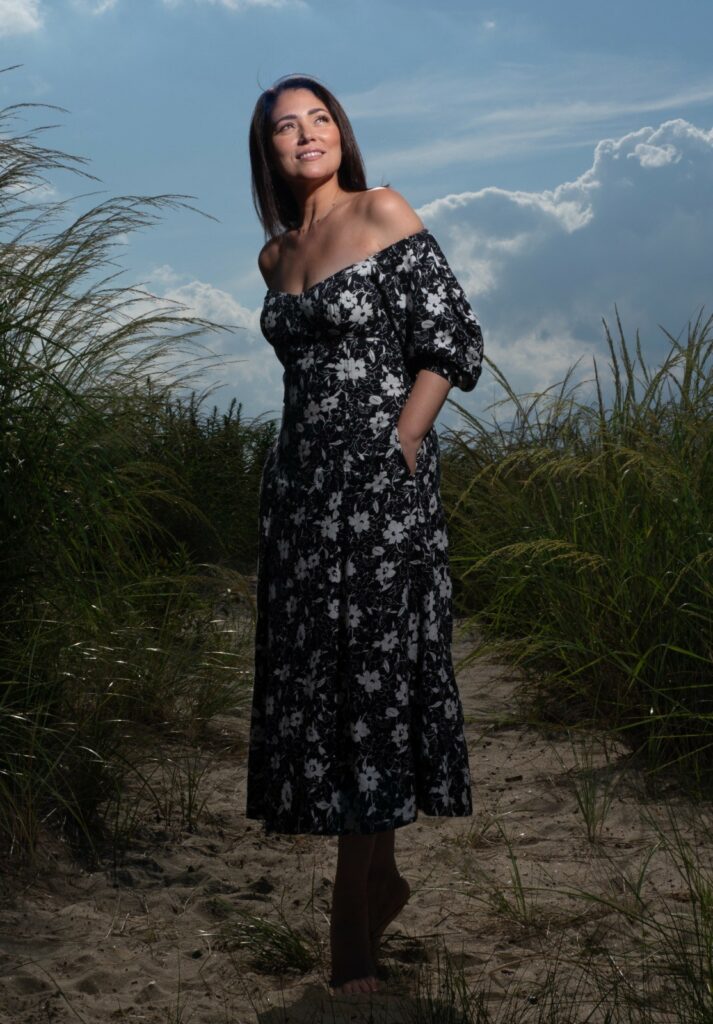
Viktoriya Drubetskaya was born in Moldova and came to the United States in 1991. She started dancing and acrobatics when she was five. She was the United States Rising Star International Latin Champion, two-time World Mambo Champion, and the United Kingdom Rising Star Latin Finalist (3rd). She and Jose Decamps were ranked 8th in the United States Professional Latin Championships and United States Rhythm Finalists (3rd).
She has trained couples to become United States Amateur Junior I and Junior II Latin Champions, as well as Youth Latin Finalists and Amateur Latin Finalists, and USA Dance 10-Dance Champions.
Viktoriya has been certified in Language of Dance (LOD) stages 1 and 2, and is a Certified Movement Analyst (CMA) at the Laban Institute of Movement Studies in New York. She is certified in three levels of the Eric Franklin Teaching Method (he is an author of Imagery for Dynamic Alignment and Conditioning for Dancers). She was awarded a Grand Master of Dance Degree by DVIDA in Ballroom and Latin, as well as American Smooth and American Rhythm. Viktoriya is an examiner for USA Dance, Dance Vision, and WDSF. She also conducts medalists’ exams for Dance Vision in different studios. She lives in New York and is available for judging and coaching.

